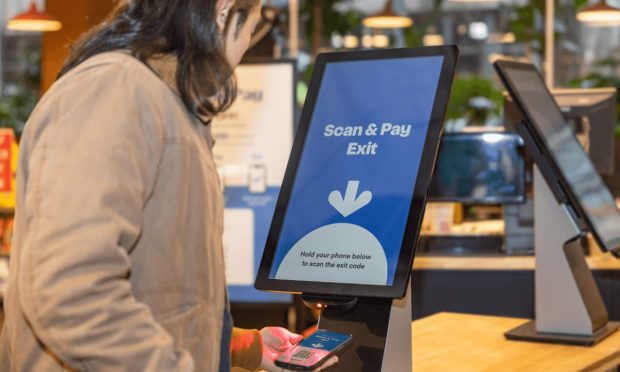Instacart Deploys Scan & Pay as In-Store Shoppers Demand Digitization

Instacart’s first Scan & Pay checkout deployment comes as in-store mobile features catch on among grocers.
The grocery aggregator announced Monday (Feb. 6) that Foodcellar Market, a grocer in Queens, New York, is the first to offer the own-device self-service option to all in-store customers.
“Our technology helps [grocers] provide a more convenient and delightful experience for their customers,” David McIntosh, vice president and general manager of Connected Stores at Instacart, said in a statement. “Scan & Pay is helping customers to stay on budget while shopping in-store. [We’re] making it even easier for customers to get what they need, when they need it.”
The option is available for simple-to-charge packaged items and pay-by-weight products such as fruits and vegetables. Consumers scan as they go, check out when they are done, and show an employee a QR code as they leave as proof of payment.
In the past, grocers’ scan-and-pay initiatives have seen mixed results. On the one hand, retail giant Walmart has been offering the option in its app to Walmart+ subscribers, and its warehouse club chain subsidiary Sam’s Club has offered the option in its app to members for years.
Yet, smaller chains have had a rougher go of it. In the fall, Wegmans, a regional supermarket chain with more than 100 East Coast stores, announced it was shutting down its SCAN scan-and-go checkout app, citing “losses.”
Still, grocers must innovate to retain their customers in the face of increased competition from eCommerce players.
“Just like department store CEOs once did, [grocery] store execs will soon feel the pain of death by a thousand cuts as consumers buy groceries just as they purchase any other retail product — gradually moving those purchases online and to specialty physical retailers with a more curated and relevant selection of the items they once bought at the grocery stores,” PYMNTS’ Karen Webster wrote in a recent feature.
Certainly, there is demand among grocers for these kinds of checkout capabilities. Research from “The Instant Payments Transformation Guide: Grocery, Pharmacy and Convenience Retailers,” a PYMNTS and ACI Worldwide collaboration, which drew from a survey of 300 United States and United Kingdom retailers, found that 28% of U.S. merchants, including grocers, are investing in in-app scan-and-go capabilities. Specifically, 21% of merchants plan to add the technology within the next three years, and 7% intend to improve their existing offerings.
Additionally, grocers see self-service offerings as essential to customer retention. In the survey, 61% of grocers reported believing that shoppers would be very or extremely likely to switch merchants if self-checkout kiosks were not provided, and 79% said the same of mobile apps with in-store features.
A smaller but still significant share of consumers agrees. Findings from PYMNTS’ report “Decoding Consumer Affinity: The Customer Loyalty to Merchants Survey 2022,” a PYMNTS and Toshiba collaboration, for which we surveyed more than 2,000 U.S. consumers, reveal that about one in five grocery shoppers say that the availability of a mobile app with in-store features would improve their loyalty to merchants.
Consequently, grocers are investing in greater omnichannel capabilities. In a recent interview with PYMNTS, Instacart’s McIntosh asserted that mobile features for brick-and-mortar shopping help improve the experience and drive satisfaction, predicting that, within the next several years, digital and physical shopping will “unify.”
“Customers are not simply thinking about things as in-store vs. online,” McIntosh said. “They want the same experience in both places.”
